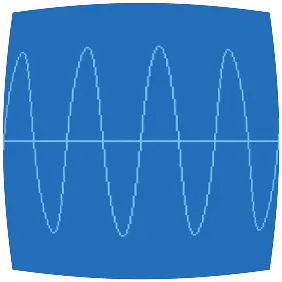If you can model how the smoke flows through the caves, you might be able to avoid it and be that much safer. The submarine generates a heightmap of the floor of the nearby caves for you (your puzzle input).
Day 9a
Feeling a bit more idealistic, I guess, wrote a lib function to reduce over a two-dimensional grid:
interface GridReduce {
<T = any, R = any>(grid: T[][], fn: (r: R, v: T) => R, init: R): R
indexed: <T = any, R = any>(
grid: T[][],
fn: (r: R, v: T, p: Point) => R,
init: R,
) => R
}
const gridReduce: GridReduce = (grid, fn, init) =>
reduce(grid, (r, vs) => reduce(vs, (r, v) => fn(r, v), r), init)
gridReduce.indexed = (grid, fn, init) =>
reduce.indexed(
grid,
(r, vs, y) => reduce.indexed(vs, (r, v, x) => fn(r, v, {x, y}), r),
init,
)
Here’s my solution for day 9a using gridReduce:
export const d9a = ({input = inputs.d9}: {input?: string}) => {
const width = clean(input).indexOf('\n')
const depths = ranks(Array.from(input.replace(/\D/g, '')).map(parse10), width)
const deltas = [-1, 1].flatMap(d => [
{dx: d, dy: 0},
{dx: 0, dy: d},
])
const nearby = ({x, y}: Point): Point[] =>
R.pipe(
deltas,
R.map(({dx, dy}) => ({x: x + dx, y: y + dy})),
R.filter(({x, y}) => x >= 0 && x < width && y >= 0 && y < depths.length),
)
const depthAt = ({x, y}: Point) => depths[y][x]
return gridReduce.indexed(
depths,
(risk, d, p) =>
nearby(p)
.map(depthAt)
.every(s => s > d)
? risk + d + 1
: risk,
0,
)
}
Day 9a sample:
Day 9a mine:
Day 9b
const setAdd = <T = any>(set: Set<T>, x: T) => {
const sizeBefore = set.size
set.add(x)
return set.size > sizeBefore
}
export const d9b = ({input = inputs.d9}: {input?: string}) => {
const width = clean(input).indexOf('\n')
const depths = ranks(Array.from(input.replace(/\D/g, '')).map(parse10), width)
const deltas = [-1, 1].flatMap(d => [
{dx: d, dy: 0},
{dx: 0, dy: d},
])
const nearby = (
{x, y}: Point,
{w, h}: {w: number; h: number} = {w: width, h: depths.length},
): Point[] =>
R.pipe(
deltas,
R.map(({dx, dy}) => ({x: x + dx, y: y + dy})),
R.filter(({x, y}) => x >= 0 && x < w && y >= 0 && y < h),
)
const depthAt = ({x, y}: Point) => depths[y][x]
const lows = gridReduce.indexed(
depths,
(lows, d, p) => (
nearby(p)
.map(depthAt)
.every(s => s > d) && lows.push(p),
lows
),
[] as Point[],
)
const basinAt = (
here: Point,
found: Set<string> = new Set(),
): Set<string> => {
for (const there of nearby(here)) {
if (depthAt(there) < 9 && setAdd(found, `${there.x},${there.y}`)) {
basinAt(there, found)
}
}
return found
}
const basins = lows.map(low => basinAt(low))
return R.pipe(
basins.map(b => b.size).sort((a, b) => b - a),
R.take(3),
mult,
)
}
Day 9b sample:
Day 9b mine:
